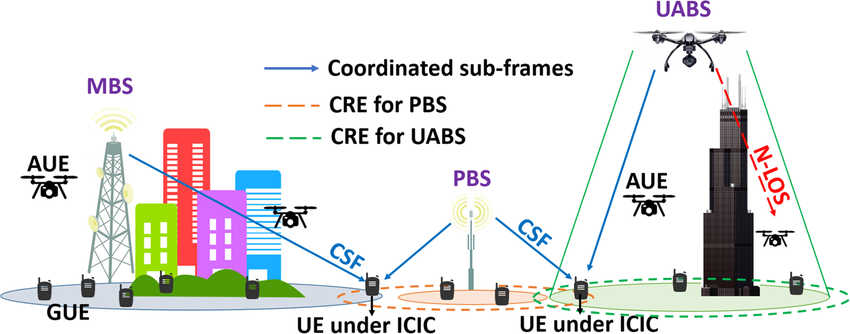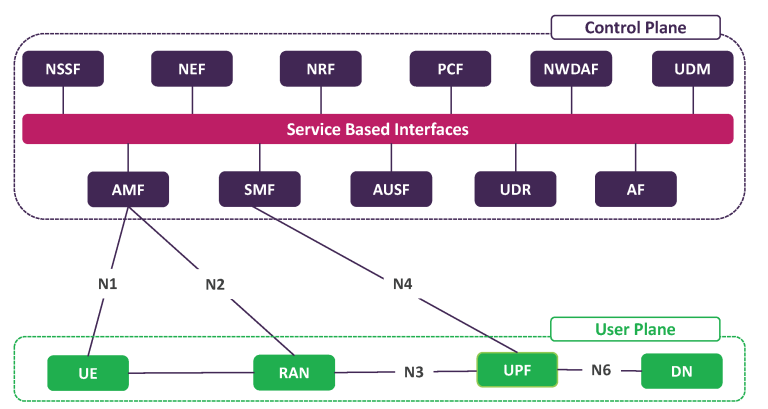UUE, UABS, and GUE Explained: The Role of Unmanned Aerial Base Stations and Ground User Equipment
telcomatraining.com – In the rapidly evolving world of wireless communication, new technologies are emerging to enhance network coverage and efficiency. Among these advancements, Unmanned Aerial Base Stations (UABS), Ground User Equipment (GUE), and User Equipment (UUE) are playing critical roles in modern communication infrastructures. This article will explore these key components, their functionalities, and their impact on the future of wireless connectivity.
Understanding UUE, UABS, and GUE
What is UUE (User Equipment)?
User Equipment (UUE) refers to devices used by end-users to connect to a network. These devices include smartphones, tablets, laptops, and IoT-enabled gadgets. UUEs serve as the primary access point for individuals to communicate through cellular networks, Wi-Fi, or other wireless systems. The effectiveness of UUEs is directly influenced by the strength and stability of network coverage, which is where UABS comes into play.
What is UABS (Unmanned Aerial Base Station)?
Unmanned Aerial Base Stations (UABS) are airborne communication nodes deployed to enhance network coverage and capacity, especially in challenging environments. These systems are typically mounted on drones, high-altitude balloons, or other aerial platforms. UABS can be temporarily or permanently positioned to provide cellular and internet connectivity in disaster-stricken areas, rural locations, and highly congested urban centers where traditional infrastructure may be insufficient.
The key advantages of UABS include:
- Flexibility and Mobility: UABS can be rapidly deployed to areas where connectivity is weak or non-existent.
- Disaster Response: During natural disasters, UABS can restore communication when terrestrial networks are down.
- Enhanced Network Coverage: They extend coverage in rural and remote regions.
- Improved Data Transmission: By strategically positioning aerial base stations, network providers can reduce congestion and enhance data speeds.
What is GUE (Ground User Equipment)?
Ground User Equipment (GUE) consists of terrestrial communication devices that interact with both traditional and aerial base stations. These include relay stations, modems, routers, and specialized receivers that facilitate seamless connectivity between users and network infrastructure.
GUE plays a crucial role in maintaining network reliability, especially when UABS is deployed. It ensures that data is transmitted effectively from aerial base stations to end-user devices while optimizing connectivity and minimizing latency.
The Role of UABS in Next-Generation Networks
The integration of UABS into modern telecommunications has significant implications for 5G and beyond. With increasing demand for high-speed internet and low-latency communication, UABS provides a viable solution to address network challenges.
Applications of UABS
- Emergency Response and Disaster Recovery: UABS can provide real-time connectivity in disaster-affected areas where terrestrial networks are damaged.
- Smart Cities and IoT Expansion: By enhancing coverage in urban areas, UABS supports smart city applications and Internet of Things (IoT) devices.
- Rural Connectivity: Traditional network infrastructure is costly to deploy in remote areas. UABS presents a cost-effective solution to bridge the digital divide.
- Public Events and Large Gatherings: Temporary deployment of UABS ensures uninterrupted connectivity during concerts, festivals, and sporting events.
Challenges and Future Prospects
Despite its numerous benefits, the deployment of UABS faces several challenges:
- Regulatory Issues: Governments must develop policies to manage airspace usage for aerial base stations.
- Battery and Power Constraints: Aerial platforms require sustainable energy sources to operate efficiently.
- Network Integration: Seamless handoff between terrestrial base stations and aerial systems needs further optimization.
As technology advances, improvements in AI-driven network management, efficient energy solutions, and enhanced regulatory frameworks will pave the way for widespread adoption of UABS.
Conclusion
UUE, UABS, and GUE are integral to the future of wireless communication. UABS extends coverage, GUE optimizes connectivity, and UUE enables user interaction with networks. As the demand for high-speed, low-latency connectivity grows, these technologies will play a crucial role in shaping the next generation of communication networks. By overcoming current challenges and integrating these solutions, the telecommunications industry can ensure seamless and reliable connectivity for users worldwide.







